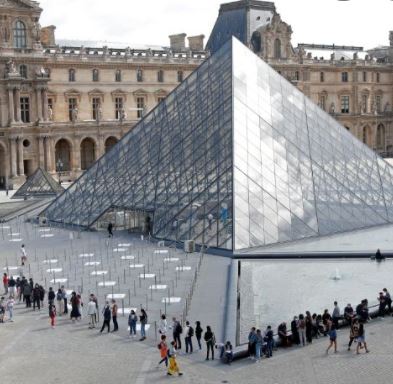Louvre Pyramid

The Louvre Pyramid (Pyramide du Louvre) is a large glass and metal structure designed by the Chinese-American architect I. M. Pei. The pyramid is in the main courtyard (Cour Napoléon) of the Louvre Palace in Paris, surrounded by three smaller pyramids. The large pyramid serves as the main entrance to the Louvre Museum. Completed in 1988 as part of the broader Grand Louvre project,[1] it has become a landmark of the city of Paris.
The Grand Louvre project was announced in 1981 by François Mitterrand, then President of France. In 1983 the Chinese-American architect I. M. Pei was selected as its architect. The pyramid structure was initially designed by Pei in late 1983 and presented to the public in early 1984. Constructed entirely with glass segments and metal poles, it reaches a height of 21.6 metres (71 ft).[2] Its square base has sides of 34 metres (112 ft) and a base surface area of 1,000 square metres (11,000 sq ft).[3] It consists of 603 rhombus-shaped and 70 triangular glass segments
